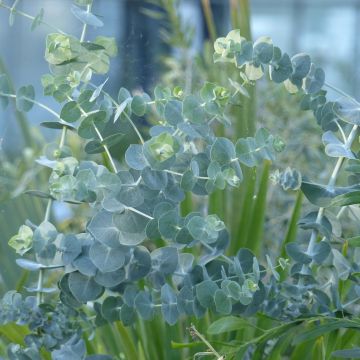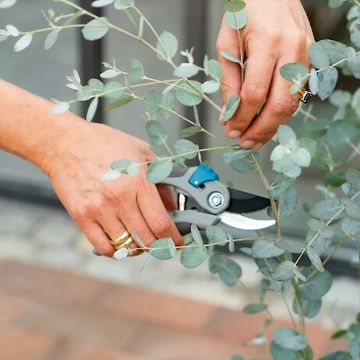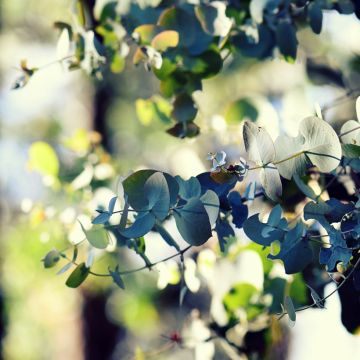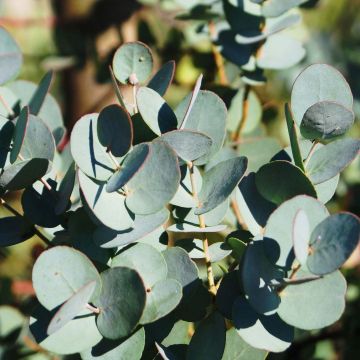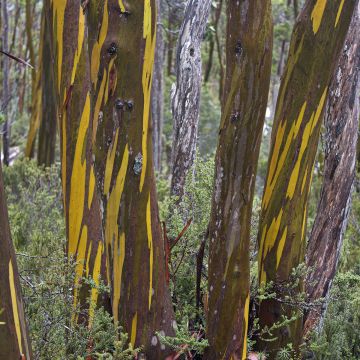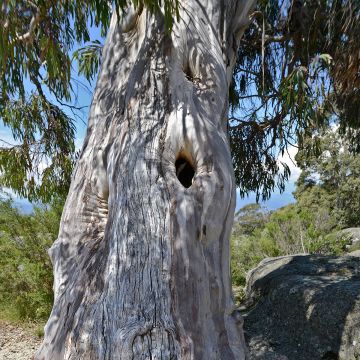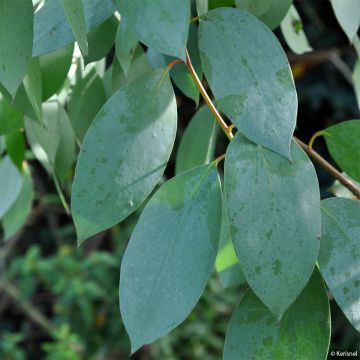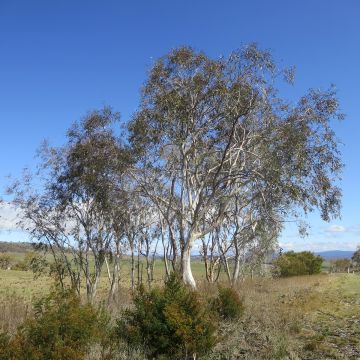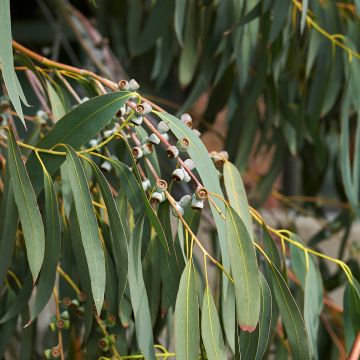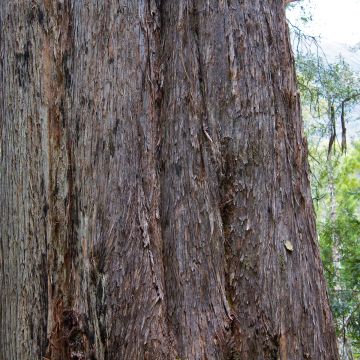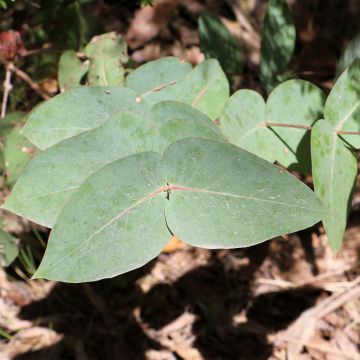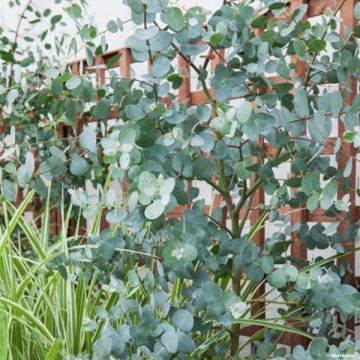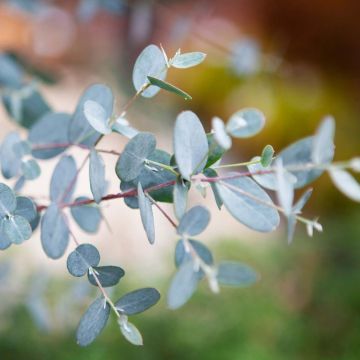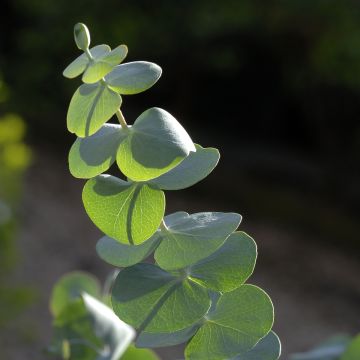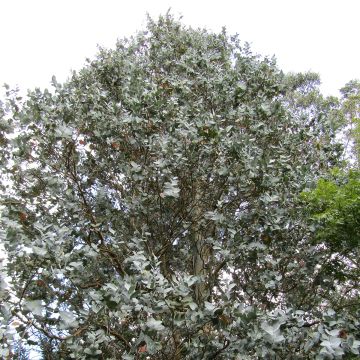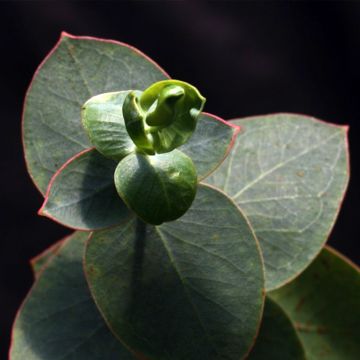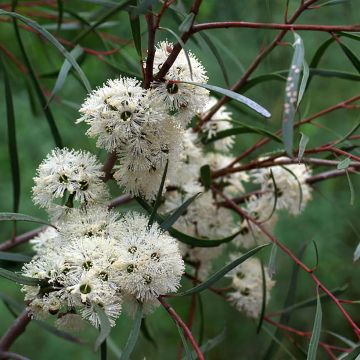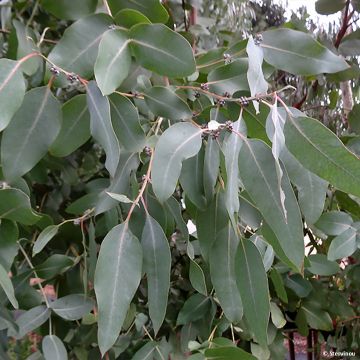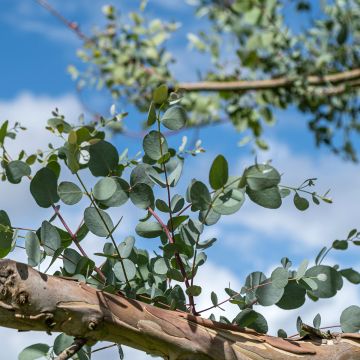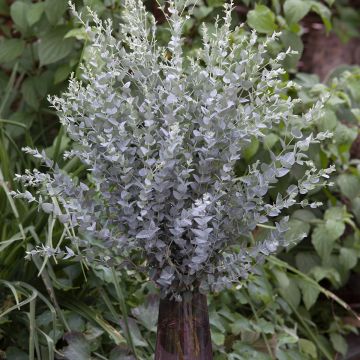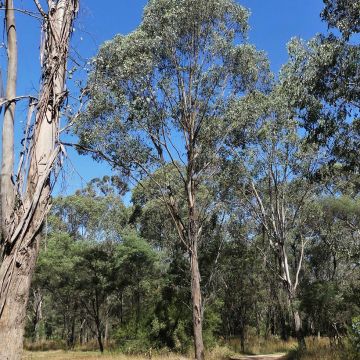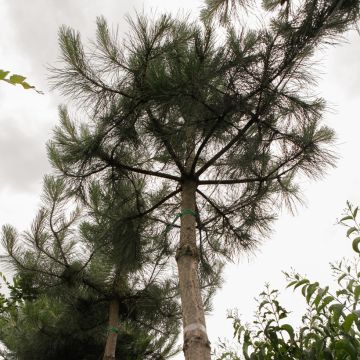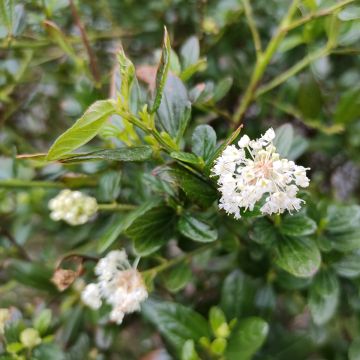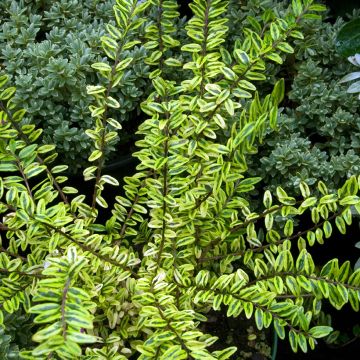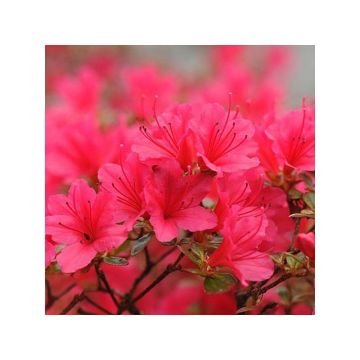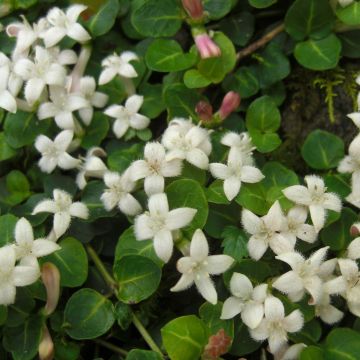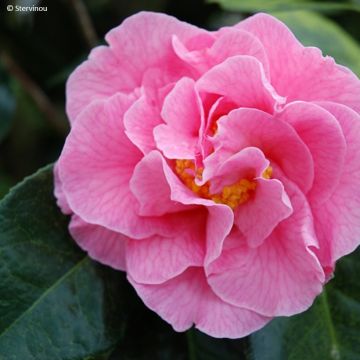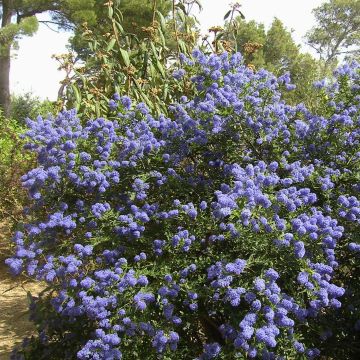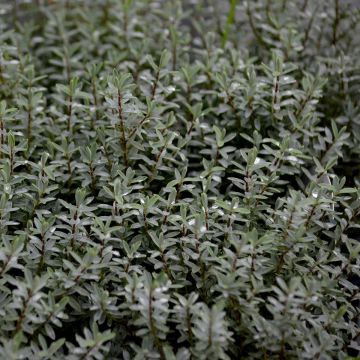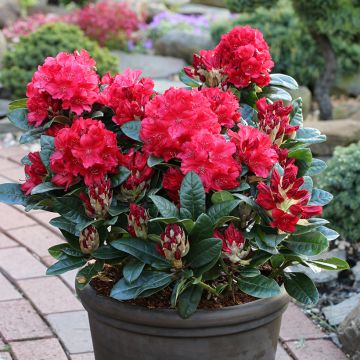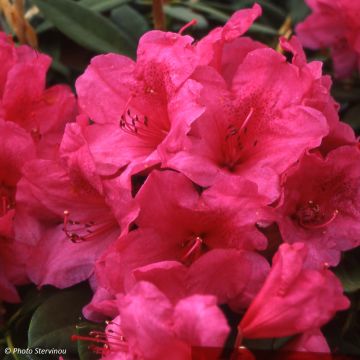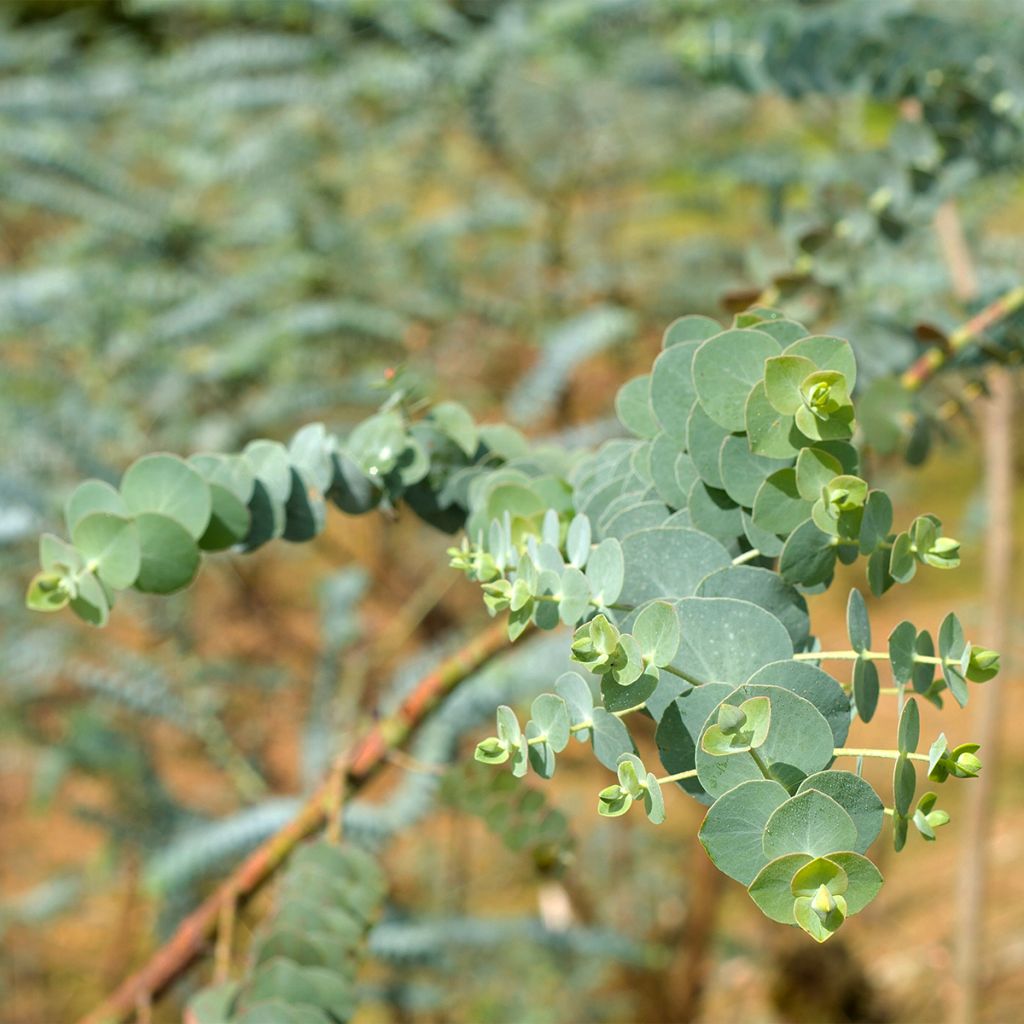

Eucalyptus pulverulenta
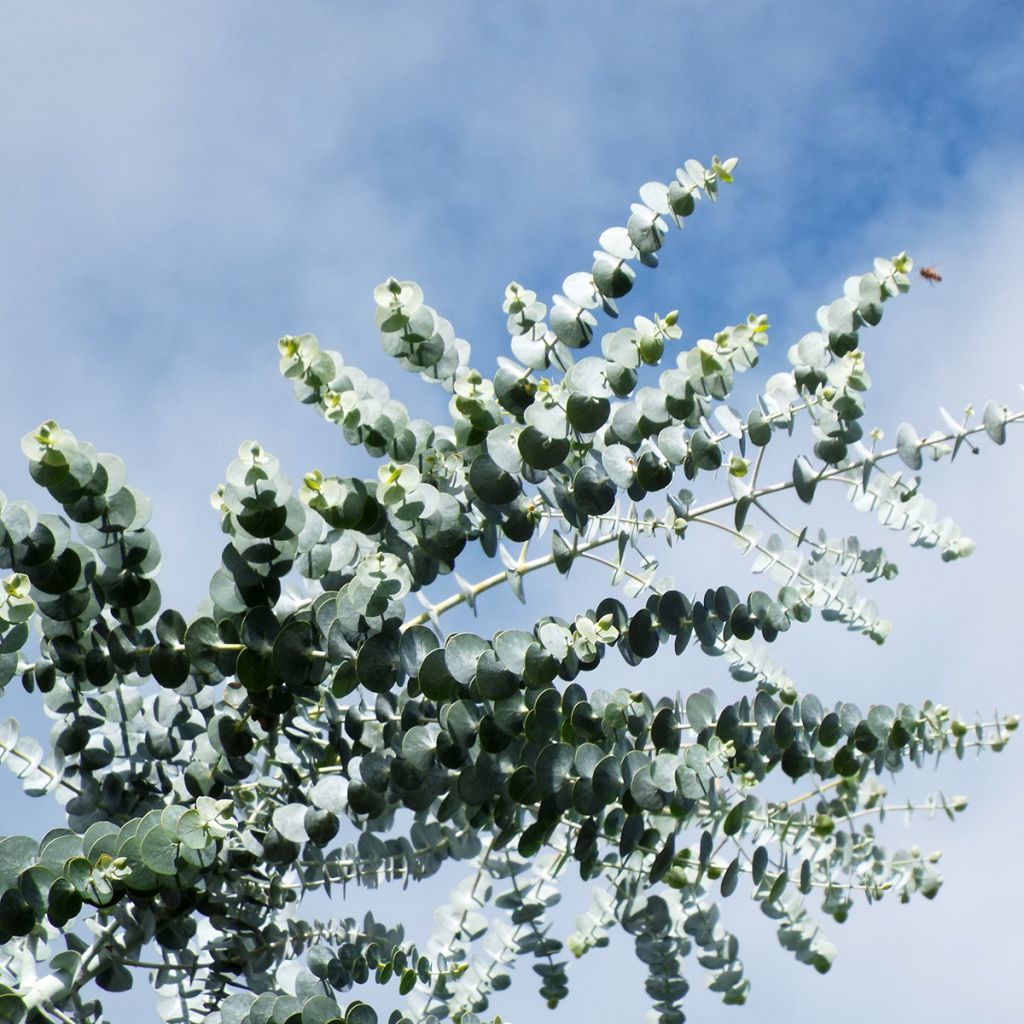

Eucalyptus pulverulenta
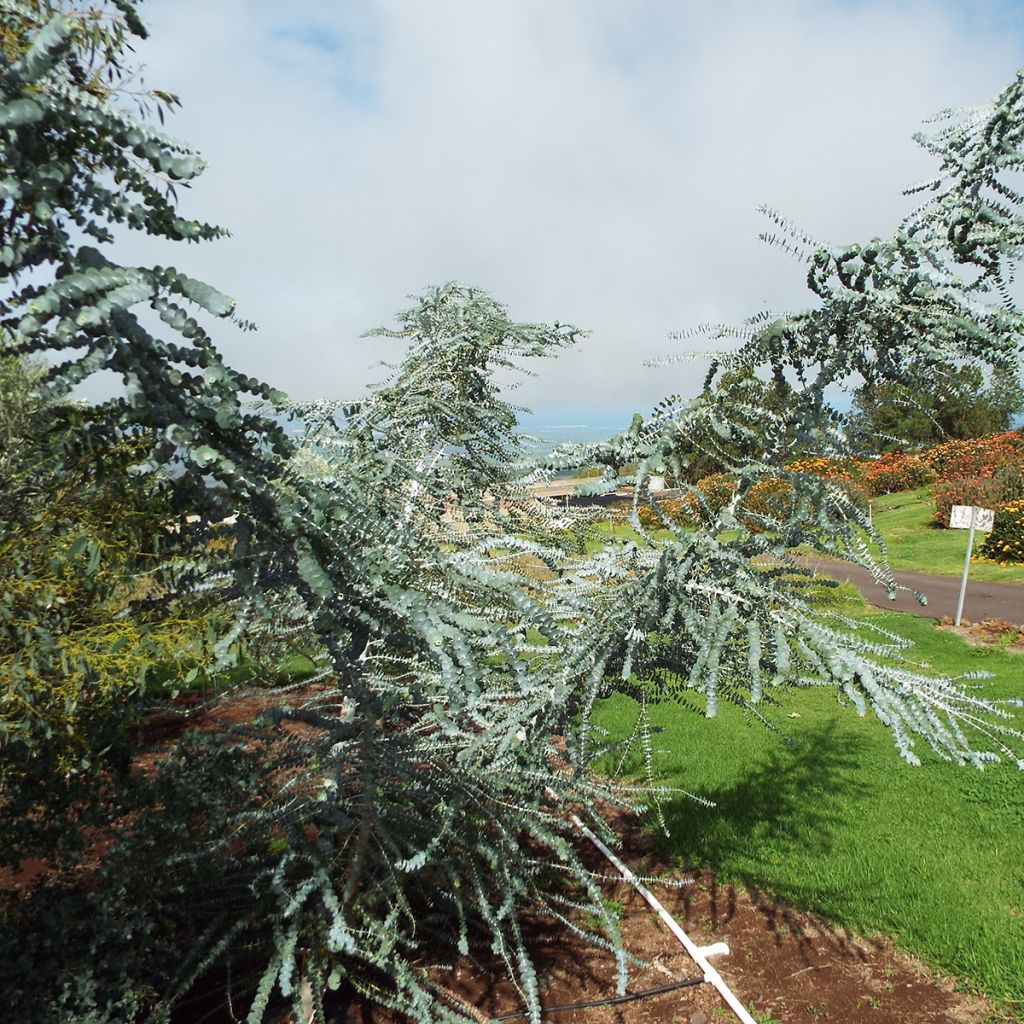

Eucalyptus pulverulenta
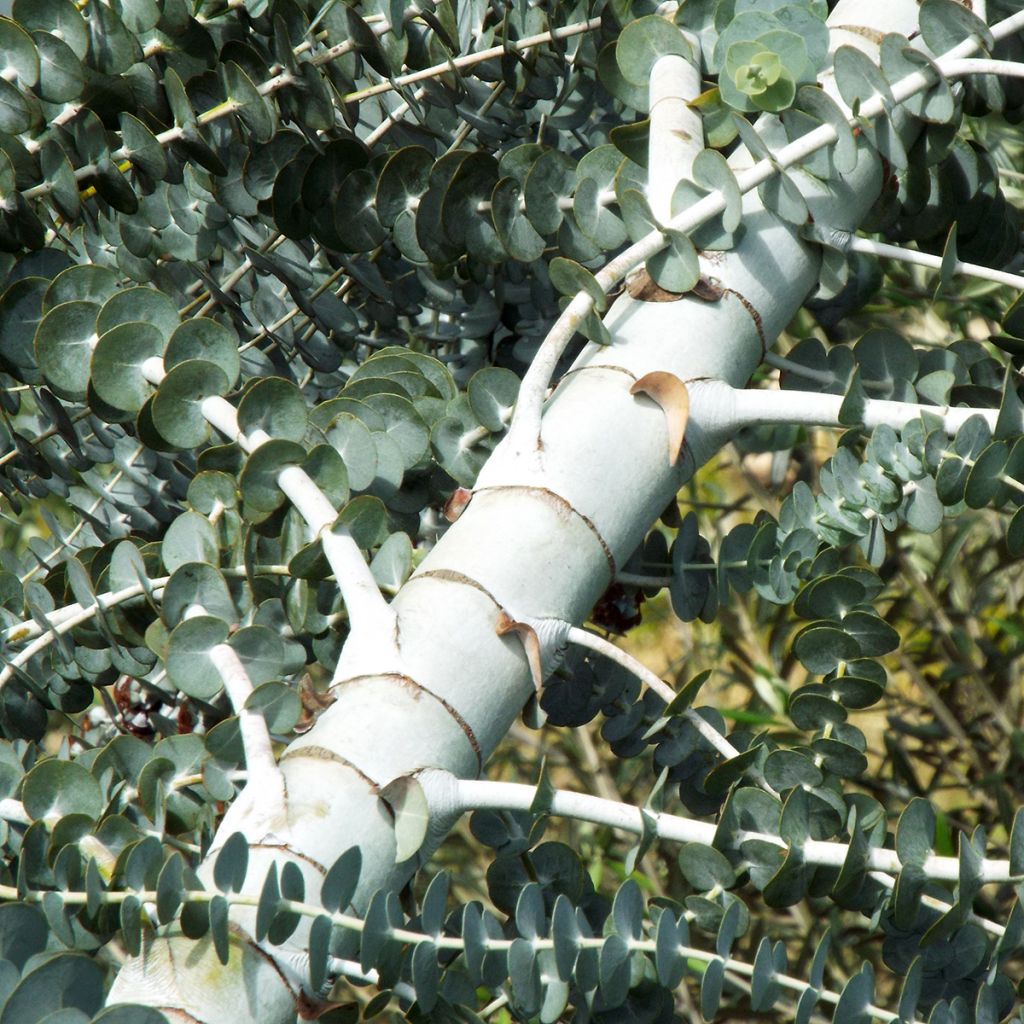

Eucalyptus pulverulenta
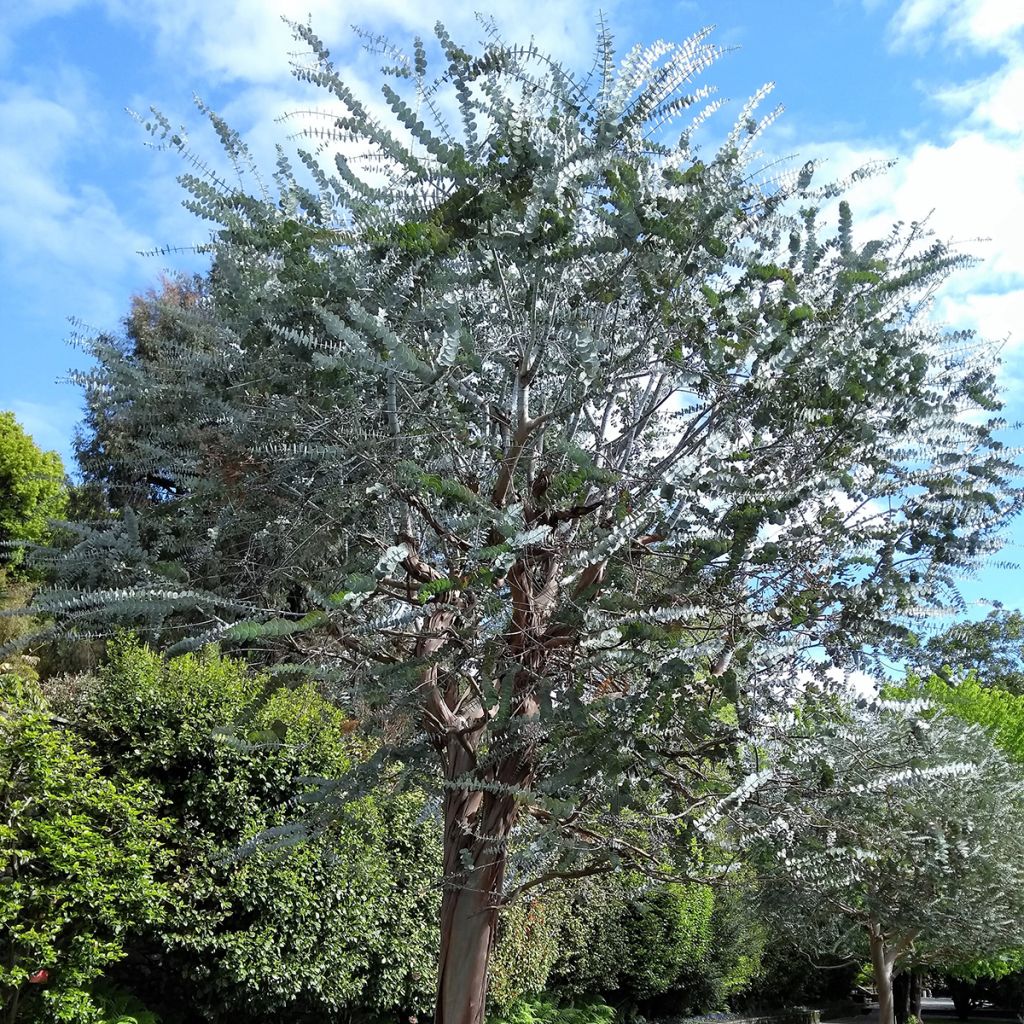

Eucalyptus pulverulenta
Eucalyptus pulverulenta
Eucalyptus pulverulenta
Silver-leaved Mountain Gum, Silver-leaved Gum, Powdered Gum, Baby Blue
Why not try an alternative variety in stock?
View all →This plant carries a 24 months recovery warranty
More information
We guarantee the quality of our plants for a full growing cycle, and will replace at our expense any plant that fails to recover under normal climatic and planting conditions.
From €5.90 for pickup delivery and €6.90 for home delivery
Express home delivery from €8.90.
Does this plant fit my garden?
Set up your Plantfit profile →
Description
Eucalyptus pulverulenta, also known as the Mountain Silver Gum, native to New South Wales, is much rarer in cultivation than its cultivar 'Baby Blue', although it surpasses it in terms of robustness and hardiness. It is a mallee-type eucalyptus, which can be grown as a small tree with a single trunk or a large bush formed by multiple stems from its stump. Its spring flowering in creamy white pompoms sandwiched between its leaves is evident on young subjects and its bark, a whitish-grey colour with brown rings, is not without appeal. This gum tree combines many qualities: it is not too bulky, quite cold-resistant, highly ornamental, and more tolerant of soil than most Eucalyptus.
Eucalyptus pulverulenta belongs to the Myrtaceae family. This botanical species is naturally present in scattered populations in central and southern New South Wales, Australia. It is found in wooded meadows, on slopes, plateaus, and mountain stations. With a modest stature for the genus, this gum tree is distinguished by its disordered habit, which is more or less round to pyramidal, its smooth bark, and its crown almost exclusively composed of juvenile leaves. Depending on whether it grows as a tree or a clump, and depending on the growing conditions, this eucalyptus can reach heights between 3 and 8 metres. Its growth is quite rapid.
The foliage of this powdery eucalyptus is evergreen in winter and aromatic when crushed. The small juvenile leaves, with a green-blue-silvery colour, and rounded shape, completely sheath the stems. They are arranged in an opposite and dense manner on the branches. The adult leaves are lanceolate, pointed, and of the same blue-silvery colour. Leaves, young stems, and inflorescences are all covered with a white powder that gives a great luminosity to the entire vegetation, especially in spring. It is this white bloom that earned the species its name "pulverulenta". Flowering occurs between May and June in our climates, on plants aged 3 or 4 years. They are actually spherical inflorescences, gathering a multitude of petal-less flowers, composed solely of creamy white stamens tightly packed like pompoms. They bloom between the leaves, grouped in threes along the branches and are followed by the formation of large green cone-shaped fruits, also covered with powder, which turn brown when ripe. The bark, which presents a ringed pattern from a young age, peels off in large strips over the years. It is grey-white speckled with brown. Eucalyptus pulverulenta, like all mallees from Australia, tolerates pruning very well, even close to the ground: the plant has a well-developed lignotuber (swollen reserve organ, with numerous dormant buds) at the collar. This organ allows it to vigorously regrow after frost, fire, or severe pruning. It is possible to train this eucalyptus to a single trunk, keeping only the most beautiful stem that emerges from the stump.
Eucalyptus pulverulenta also tolerates both oceanic and semi-arid climates, its cold resistance is limited to short, late-night frosts, around -10/-12°C (14/10.4°F) (or even -14°C (6.8°F) according to some sources), if planted in well-draining soil. Eucalyptus trees are often considered heavy water consumers, even in winter, contributing to soil drying. Generally, mallee-type species with lignotubers withstand dry summers once well-rooted. The frost resistance of eucalyptus trees depends on their age (young specimens are more susceptible to frost), soil moisture, and consequently the water content of their tissues, the more or less abrupt arrival of cold weather, and their ability to recover, among other factors.
The Mountain Silver Gum works well in scenes dominated by white or silver. It brings a fantastically bright touch of light to the garden when planted as a hedge or as a solitary specimen. It can be associated with Callistemons, Leptospermums, mimosas, evergreen ceanothuses... Easy to maintain, it does not require pruning, but it can be cut back very short to remain compact and bushy. Lastly, it is a nectar-rich plant, elegant and luminous at all stages of its growth, both as a young and adult plant, whose branches are magnificent in bouquets. The ideal climate for this small tree is at the seaside (at least 100 metres (328 feet) from the shore), where cold spells are short-lived and rarely severe.
Report an error about the product description
Eucalyptus pulverulenta in pictures


Plant habit
Flowering
Foliage
Botanical data
Eucalyptus
pulverulenta
Myrtaceae
Silver-leaved Mountain Gum, Silver-leaved Gum, Powdered Gum, Baby Blue
Australia
Other Eucalyptus
Planting and care
Eucalyptus pulverulenta is best planted in early spring if you are in a borderline hardiness zone, but in early autumn in very dry summer regions. It should be planted in well-drained soil, slightly acidic to slightly alkaline, in a warm and sunny location, sheltered from strong and cold winds. If the soil in your garden is a bit heavy, improve drainage by adding coarse sand, gravel, or pumice, or plant in a raised bed on the slope of a large embankment. No need for pruning. Water regularly during the first two years, especially in dry summers, then the bush can do without watering. Fertilizer is not recommended. You can let it grow as a small tree with a single trunk by selecting the most beautiful stem from the stump. In March, you can also cut it back to ground level to form a beautiful, well-branched bush, 3m (10ft) tall.
Note about the hardiness of eucalyptus:
Cold resistance is dependent on many factors: the age of the plant, soil moisture, and the severity of the cold. Eucalyptus generally achieve their optimal frost resistance only when their adult foliage appears, after 2, 3, or 4 years of cultivation. Mallee-type species (tree or bush growing in a clump with several trunks) and Mallet-type species (tree or bush with a trunk that quickly divides into forks) are naturally more able to survive the cold, as they have the ability to regenerate.
Planting period
Intended location
Care
This item has not been reviewed yet - be the first to leave a review about it.
Evergreen shrubs
Haven't found what you were looking for?
Hardiness is the lowest winter temperature a plant can endure without suffering serious damage or even dying. However, hardiness is affected by location (a sheltered area, such as a patio), protection (winter cover) and soil type (hardiness is improved by well-drained soil).

Photo Sharing Terms & Conditions
In order to encourage gardeners to interact and share their experiences, Promesse de fleurs offers various media enabling content to be uploaded onto its Site - in particular via the ‘Photo sharing’ module.
The User agrees to refrain from:
- Posting any content that is illegal, prejudicial, insulting, racist, inciteful to hatred, revisionist, contrary to public decency, that infringes on privacy or on the privacy rights of third parties, in particular the publicity rights of persons and goods, intellectual property rights, or the right to privacy.
- Submitting content on behalf of a third party;
- Impersonate the identity of a third party and/or publish any personal information about a third party;
In general, the User undertakes to refrain from any unethical behaviour.
All Content (in particular text, comments, files, images, photos, videos, creative works, etc.), which may be subject to property or intellectual property rights, image or other private rights, shall remain the property of the User, subject to the limited rights granted by the terms of the licence granted by Promesse de fleurs as stated below. Users are at liberty to publish or not to publish such Content on the Site, notably via the ‘Photo Sharing’ facility, and accept that this Content shall be made public and freely accessible, notably on the Internet.
Users further acknowledge, undertake to have ,and guarantee that they hold all necessary rights and permissions to publish such material on the Site, in particular with regard to the legislation in force pertaining to any privacy, property, intellectual property, image, or contractual rights, or rights of any other nature. By publishing such Content on the Site, Users acknowledge accepting full liability as publishers of the Content within the meaning of the law, and grant Promesse de fleurs, free of charge, an inclusive, worldwide licence for the said Content for the entire duration of its publication, including all reproduction, representation, up/downloading, displaying, performing, transmission, and storage rights.
Users also grant permission for their name to be linked to the Content and accept that this link may not always be made available.
By engaging in posting material, Users consent to their Content becoming automatically accessible on the Internet, in particular on other sites and/or blogs and/or web pages of the Promesse de fleurs site, including in particular social pages and the Promesse de fleurs catalogue.
Users may secure the removal of entrusted content free of charge by issuing a simple request via our contact form.
The flowering period indicated on our website applies to countries and regions located in USDA zone 8 (France, the United Kingdom, Ireland, the Netherlands, etc.)
It will vary according to where you live:
- In zones 9 to 10 (Italy, Spain, Greece, etc.), flowering will occur about 2 to 4 weeks earlier.
- In zones 6 to 7 (Germany, Poland, Slovenia, and lower mountainous regions), flowering will be delayed by 2 to 3 weeks.
- In zone 5 (Central Europe, Scandinavia), blooming will be delayed by 3 to 5 weeks.
In temperate climates, pruning of spring-flowering shrubs (forsythia, spireas, etc.) should be done just after flowering.
Pruning of summer-flowering shrubs (Indian Lilac, Perovskia, etc.) can be done in winter or spring.
In cold regions as well as with frost-sensitive plants, avoid pruning too early when severe frosts may still occur.
The planting period indicated on our website applies to countries and regions located in USDA zone 8 (France, United Kingdom, Ireland, Netherlands).
It will vary according to where you live:
- In Mediterranean zones (Marseille, Madrid, Milan, etc.), autumn and winter are the best planting periods.
- In continental zones (Strasbourg, Munich, Vienna, etc.), delay planting by 2 to 3 weeks in spring and bring it forward by 2 to 4 weeks in autumn.
- In mountainous regions (the Alps, Pyrenees, Carpathians, etc.), it is best to plant in late spring (May-June) or late summer (August-September).
The harvesting period indicated on our website applies to countries and regions in USDA zone 8 (France, England, Ireland, the Netherlands).
In colder areas (Scandinavia, Poland, Austria...) fruit and vegetable harvests are likely to be delayed by 3-4 weeks.
In warmer areas (Italy, Spain, Greece, etc.), harvesting will probably take place earlier, depending on weather conditions.
The sowing periods indicated on our website apply to countries and regions within USDA Zone 8 (France, UK, Ireland, Netherlands).
In colder areas (Scandinavia, Poland, Austria...), delay any outdoor sowing by 3-4 weeks, or sow under glass.
In warmer climes (Italy, Spain, Greece, etc.), bring outdoor sowing forward by a few weeks.

































